The History of the Appearance and Spread of Spinach
Spinach appeared in the Middle Ages. The place of its origin is considered to be ancient Persia. Over time, many Arab countries also learned about its existence. The Arabs considered spinach the king of vegetables. They used it for a long time as a delicacy in wealthy families and on special occasions.
Spinach is neither an herb nor a condiment – it is a full-fledged vegetable in its own right. It can be eaten as a part of a dish as well as separately.
Spinach has been grown in Europe since the 14th century. It is almost unlike spinach, which we are accustomed to see now. The first vegetable began to be grown by Spanish monks in the monastery gardens.
In the 16th and 17th centuries, spinach bread and spinach juice became popular. Bread was baked from flour, which was obtained from spinach seeds. The juice was used for decorative purposes in cooking. Butter, cream, various creams and sauces were dyed green with it. The juice was also a useful vitamin supplement.
Spinach quickly spread throughout Europe. Modern spinach, began to be grown in the 16th century at the behest of Catherine de Medici. She introduced the fashion for the vegetable. It was served at every meal.
Nuts, berries, vegetables, cheeses, meats, soups – and these are not all the foods that can be combined with spinach. It’s a great option for a light snack or topping for a sandwich.
Spinach is an annual plant with green, slightly curved leaves. It reaches 20-30 cm in height. Spinach is now grown everywhere except in the tropics. In Europe it is very popular in Germany, Italy and France. Of the larger countries in China and in the United States. In America, three-quarters of the spinach crop is sold fresh. Leaves are sold by weight, in bunches or packed in airtight containers.
Useful Properties of Spinach
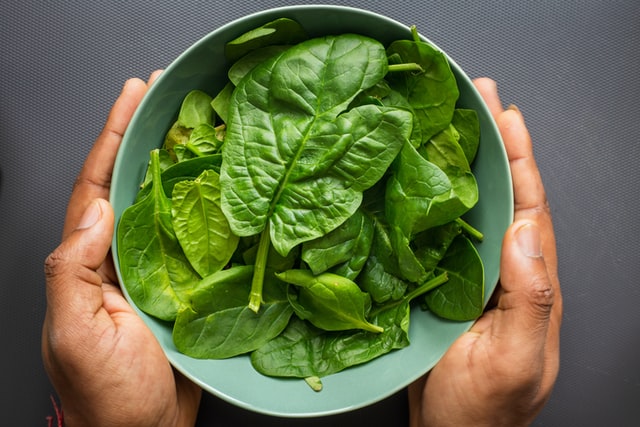
Spinach contains a large amount of protein, 14 kinds of vitamins and many different micronutrients:
- Biotin (vitamin H) – regulates blood sugar levels, supports the normal functioning of muscle cells, nourishes the skin, hair and nails;
- Niacin (vitamin B3) – strengthens the heart muscle, promotes healthy sleep;
- Vitamin C – increases immunity;
- Tocopherol – essential for vision, heart function, healthy potency, and mental clarity;
- Calcium – important for bones and teeth;
- Copper – activates production of happiness hormones, increases the susceptibility of skin to ultraviolet light, which affects the beautiful tan and rich hair color;
- Iron – stimulates the processes of hematopoiesis and cell respiration, normalizes the level of hemoglobin in the blood;
- Potassium – removes water from the body, prevents the formation of cellulite;
- Oxalic acid content is 8 times higher than in the sorrel itself;
- Spinach protects mucous membranes, speeds up carbohydrate metabolism, calms the nerves;
- Stimulates the synthesis of vital hormones, improves mood, and helps in the fight against excess weight;
- High iodine content – affects the proper functioning and health of the thyroid gland;
- Fiber content – promotes the work of the intestine and the removal of toxins from the body.
Spinach benefits
Spinach has a tonic and restorative effect on the whole body. This is a low-calorie product, dietary and useful. Its regular consumption affects a healthy complexion, strong teeth, healthy hair and fresh skin. Spinach inhibits the development of malignant tumors.
Spinach harms
Spinach has a high content of oxalic acid, than it is contraindicated to people with stones in the bladder, kidney and gallbladder, suffering from gout and disorders of salt metabolism in the body. If spinach is not fresh – it becomes toxic and harmful to the body. Spinach should not be consumed with blood thinning drugs, it also blocks the absorption of nutrients.
Caloric value and nutritional value of spinach
| Spinach | Protein per 100g/g | Carbohydrates per 100g/g | Fats per 100g/g | Calories per 100g/kcal |
| Fresh | 2,4 | 2,0 | 0,8 | 19,8 |
| Frozen | 3,5 | 3,2 | 0,6 | 23,7 |
| Stewed | 2,1 | 1,3 | 2,6 | 39,4 |
| Fried | 3,3 | 4,7 | 11,8 | 135,1 |
| Boiled | 3,0 | 2,0 | 0,0 | 20,0 |
Spinach Species and Varieties
Today there are many species and varieties of cultivated spinach – Indian, giant, water spinach, etc. They differ in the appearance of the leaf rosette, the height of the bush and the period of ripeness, the area of growth and taste.
Spinach comes in:
- early-ripening,
- medium-ripening,
- late-ripening.
Early varieties of spinach produce a crop two to three weeks after seeds are sown in the ground. The best time for planting is early spring. Leaves reach a diameter of 12 cm to 50 cm. These varieties can also be replanted in the fall.

Medium-ripening varieties of spinach – their maturation time lasts 35-60 days after planting the seeds. But you can speed up the process – to do this, you need to germinate the seeds, soaking them for a couple of days in a weak solution of potassium permanganate. Medium-ripening varieties grow longer, you can sow them simultaneously with the early-ripening varieties.
The leaf rosettes are 25 to 30 cm in diameter.
Late varieties of spinach are among the most popular varieties. Late varieties have juicier, crispier leaves and a brighter flavor. Late varieties mature 90 to 100 days after sowing in the open ground. The diameter of the leaf sprouts varies from 15 to 30 cm.
According to the type of leaves spinach can be:
- Wrinkled variety, has voluminous leaves. They are most often sold fresh.
- The smooth-leafed variety of spinach is easier to pick. It is often used to make balls or briquettes to sell frozen.
- A hybrid of the wrinkled and smooth-leafed varieties, it has lush leaves. It has leaves that are easy to pick. This variety is sold both fresh and frozen.
There is also a not quite standard spinach – it is aquatic. It belongs to a genus of flowering plants that number a large number of species. Under natural growing conditions, the aquatic variety has the appearance of a vines with sparse leaves and beautiful flowers. It is most common in tropical Asian countries. The aquatic species can grow at any altitude, from 0 to 1,500 meters above sea level. It grows mainly where rivers, ponds, streams, rice paddies, savannahs and buried waste sites. The water variety is quite unpretentious. It can be grown in special climatic conditions.
How to Choose Spinach?
Spinach is among the most contaminated vegetables. It can grow in soil that contains heavy metal salts, poisonous and hazardous substances. You should only pick it in areas where there are no harmful industrial plants or landfills.
If you buy spinach in a store – be sure to pay attention to where it came from and where it was grown.
Tips when choosing spinach:
- Color
The leaves should be a juicy green color. The coloring is very bright. This indicates that the spinach has not been stored for a long time, but has been picked recently. The juicy color of the greens indicates high vitamin C content. - Smell
Fresh spinach has a rich, mouthwatering smell. If you feel an unpleasant aroma from the leaves (or it is absent at all) – do not buy such a product. That means it has been on the shelf for several days. - Leaf structure
Spinach leaves should be a little crispy. Check this way: pinch the tip of the vegetable between two fingers and squeeze it lightly. If you feel a slight crunch and crackle, it means it is fresh and was picked at least 12 hours ago. Spinach leaves are no larger than an egg. Large leaves indicate nitrate content. - The absence of yellow and black spots
This indicates that the greens are either damaged by insects, or have been treated with special products and solutions against pests. It is impossible to eat such leaves. - Fresh appearance
Spinach greens should not have any external defects. The leaves should be smooth, supple and juicy. If the greens are crumpled or wilted – such a product can be harmful to the body. - Stem thickness
If the stem of spinach is too wide, then the greens are already overripe and contain a lot of bitterness.
The most nitrates are in the petioles – they need to be removed.
Spinach leaves should be soaked before use. You can almost completely get rid of harmful substances – boil and steam the leaves.
How to Wash Spinach
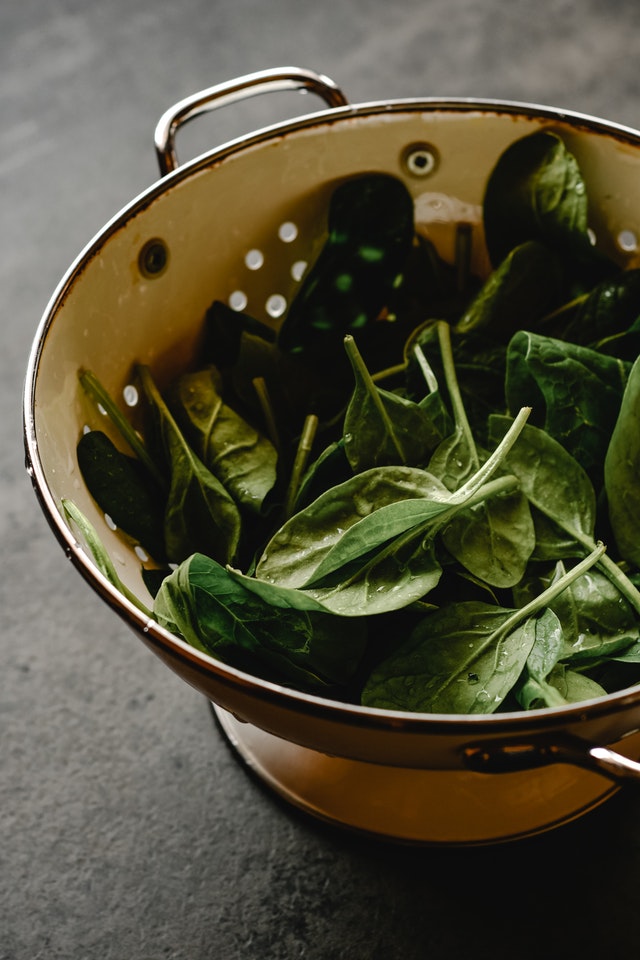
- Separate the leaves.
- Run your hand along the vein to separate the leaves from the stem.
- Put the leaves in a bowl of water, turn them over several times, and strain the water.
- Repeat the process until all the dirt is washed away.
How Can I Know if Spinach is Spoiled?
- Visually assess the condition of the leaves – if they are not fresh and firm, but flaccid and not crunchy when pressed, do not have a bright green, rich color and are damaged – spinach should not be used.
- If dark spots, rot and mold appeared – it is unacceptable to use such spinach for consumption.
- If the vegetable has an unpleasant smell.
Using Spinach in Cooking
- The flavor of spinach becomes stronger and more sour after it is cooked.
- You can make dishes with fresh, frozen, or canned spinach. It is better to use fresh or frozen spinach.
- You can steam, boil, roast, or bake this leafy vegetable.
- Add it to soups, salads, pancakes, side dishes, baked goods, juices, etc.
- Spring spinach can be boiled or added to salads raw. Summer spinach can only be eaten boiled.
- To preserve the useful qualities of spinach – do not overheat it and do not stir it too intensively. This leads to the destruction of the shell of plant cells and loss of useful substances.
- For better absorption of vitamins A and E, add a spoonful of olive oil to spinach salads.
- Freezing does not affect spinach’s health benefits, and the shelf life is extended.
Spinach Slicing Options
To slice spinach, use the “chiffonade” slicing technique or simply chopping. This is slicing in thin strips of leafy vegetables. The strips should be between 1 mm and 3 cm wide.
For this slicing:
- stack several sheets on top of each other;
- roll them up into a tight roll;
- slice across with quick motions;
- hand divide the sliced leaves into individual narrow strips.
Spinach can be left whole or not very finely chopped with a sharp knife. You can tear with your hands so you don’t squeeze the juice out of the leaves.

How to Store Spinach
Spinach is a product that does not keep for long. You should consume it as soon as possible. Over time, it loses its useful properties and taste qualities.
- Spinach can be stored in the refrigerator, in a wrapped bag, also in the freezer – in the form of leaves or puree.
- For storage, choose and use only green spinach.
- Spinach harvested in the fall is good for long-term storage.
- Store spinach away from fruits and vegetables so that the ethylene released from them will not affect the condition of the vegetable and provoke it to overripe and spoil.
- Spinach dishes should be stored for no more than 30 hours.
Storing spinach at room temperature
Spinach retains its freshness at low temperatures.
To store spinach at room temperature, place it in a cool place out of the sun. This will keep it for no more than a day. Longer storage will not improve the quality and taste of the greens.
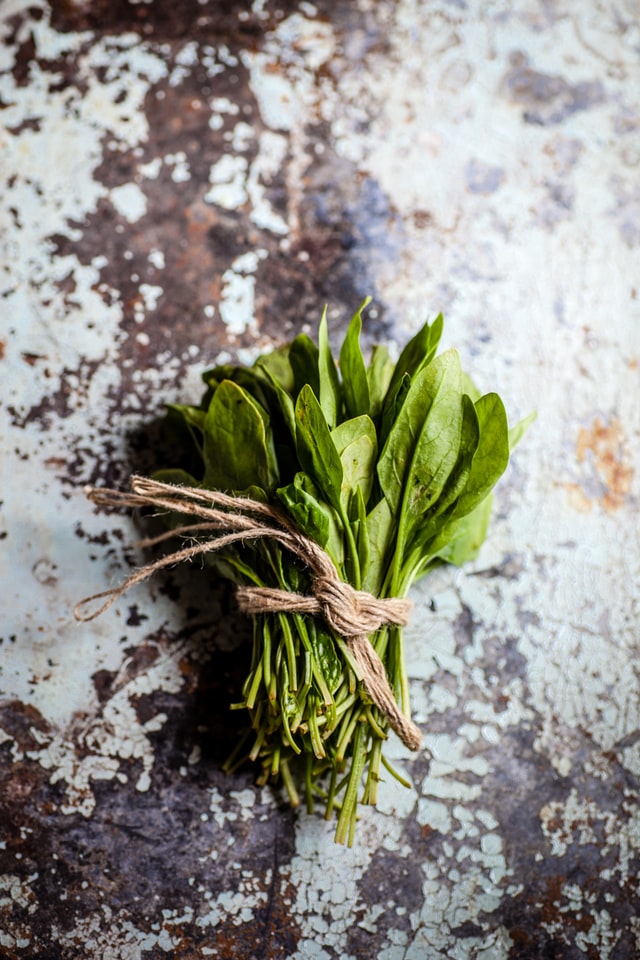
Storing spinach in the refrigerator
When preparing spinach for storage in the refrigerator, you do not need to wash it – otherwise it will quickly spoil. You can store spinach in the refrigerator in these ways:
1. Place the spinach, cleaned of dirt, in a plastic bag;
- Make several holes in the bag for air circulation;
- Place in the refrigerator in the vegetable drawer or on the middle shelf.
- You can store spinach like this for up to 3 weeks.
2. You can store spinach in a plastic container.
- Put the cleaned, dry leaves into an airtight container and close with a lid.
- Store the container with the spinach on the middle shelf of the refrigerator for 2-3 weeks.
3. A glass jar is a good container for storing spinach.
- Place the greens and close with a lid.
- Keep the spinach jar for about two weeks.
4. In a container of water.
- Put the spinach leaves in a container of water and put it in the refrigerator.
- Use the spinach within three days.
Storing spinach in the freezer. Freezing spinach
Spinach should be frozen fresh – so it will retain its maximum nutrients. Do not freeze it again. For freezing form small portions.
Spinach can be kept in the freezer for 7-8 months.
1. Freezing spinach leaves:
- Cut off the stems, leaving only the good leaves without damage, and rinse them under running water;
- Spinach clean, spread it out on paper towels to let it dry out and absorb any excess moisture;
- Then put the spinach in a glass dish and pour hot water over it;
- After 2 minutes, drain the water and wait for it to cool;
- Squeeze the greens with your hands and transfer them;
- Place several layers of spinach in small pieces of clingfilm and twist into a tube. Put the rolled spinach in the freezer. Or use food storage containers in the freezer instead of clingfilm.
For quick defrosting – leave spinach on the table for 15-20 minutes and then you can use it.
2. Freezing creamed spinach:
- Rinse spinach thoroughly and dry slightly on paper towels;
- Using a meat grinder or blender, chop until smooth;
- Put the mixture into an airtight container, close with a lid and put it in the freezer;
- Instead of containers, you can use airtight or vacuum bags.
3. Freeze spinach in cubes
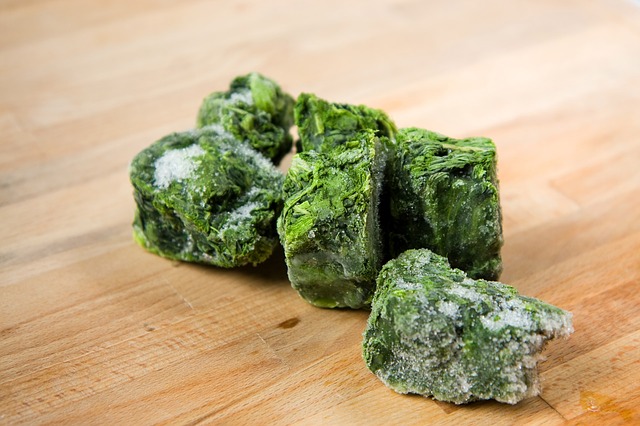
- Chop spinach leaves or sprigs;
- Place in ice molds, fill with water and put in the freezer.
- As needed, remove cubes and use in cooking.
Spinach Cooking Ways
Use young spinach for salads or dip (a sauce to dip food into, such as meat and seafood). Steam, roast, or stew the coarser, more mature leaves.
Spinach tastes bland. When cooking spinach dishes, sorrel or lemon dressing (a teaspoon of lemon juice with a tablespoon of olive oil) is often added to it.
Spinach stew
- Spinach contains a lot of water.
- When braising it, do not add anything to the pan except oil and seasoning. The water contained in the leaves will be enough.
- Just put the leaves in the pan, cover with a lid.
- After 3 to 4 minutes, turn them over. And after another 2 minutes – the stewed spinach will be completely ready.
- If the spinach is frozen the time of cooking will increase by 3 times: you will need to stew for about 15-20 minutes, stirring from time to time.
Fried spinach
The process of cooking roasted spinach is the same as for stewing. Only when roasting, evaporate all the liquid that poured from the leaves. And fry in vegetable oil until desired readiness. Fried spinach leaves with scrambled eggs are a wonderful breakfast.
Grated spinach is widely used in the preparation of first courses – soups are light, but nutritious and full of vitamins and minerals.
Raw or boiled?
Spinach can be eaten raw or boiled. Its uniqueness is that when it is cooked the useful properties that it contains – do not disappear. Prepare with it a variety of fresh salads, soups, purees, pies, add it to pizza, lasagna. To meat, poultry, bacon – add a salad with fresh spinach – it will help heavy or fatty foods digest better.
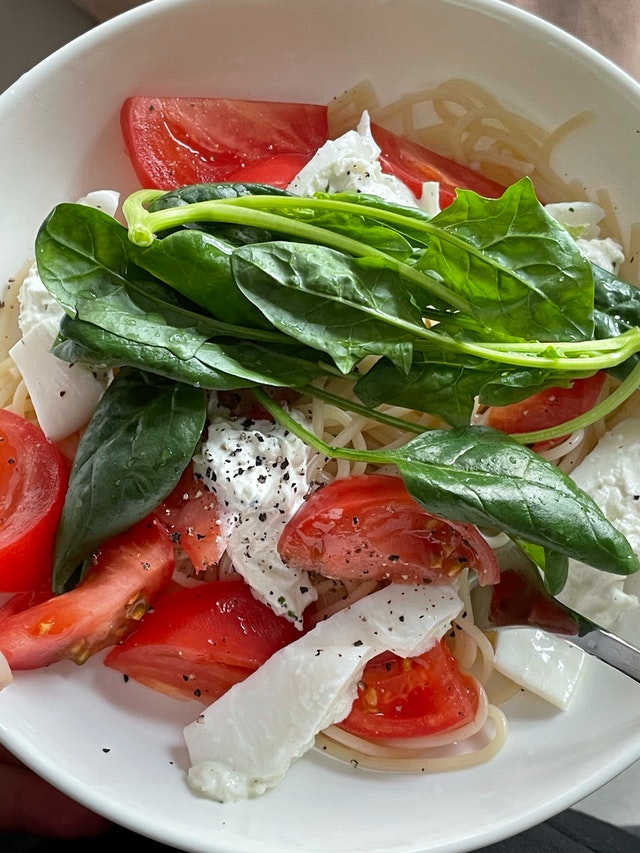
Boiled spinach
Boil spinach in salted water. Time 3-4 minutes on low heat. Drain the water – cooked spinach is ready.
Dried spinach
Spinach can be dried. It is no less useful than fresh spinach.
- Rinse spinach leaves thoroughly and dry a little.
- Place the clean leaves on a tray and leave in the sun to dry.
- You can dry the spinach in an electric dryer or oven for 3 to 5 hours at 50 degrees.
- After drying, transfer spinach to jars or textile bags.
- Store dried spinach in a dark, cool and dry place.
Salted spinach
- Rinse spinach leaves thoroughly under running water.
- Cut into several pieces.
- Put in a jar and cover with salt.
- Per kg of spinach need 3-4 tbsp of salt.
- Or you can rub the clean leaves with salt and put them in a jar.
- You can store the salted spinach for 1-2 months in a dark and cool place.
Spinach Cooking Recipes Ideas
Spinach can be used to make salads, soups, omelets, casseroles, various dressings, and pie fillings. It combines well with nutmeg, fennel, dill, parsley, basil, black pepper, lemon and lime zest.
1. Spinach and beetroot salad with caramelized nuts and citrus vinaigrette dressing

A surprisingly juicy and delicious salad. A mix of flavors sweet, sour, and a slight bitterness from the grapefruit and it all comes together as a whole. The bright mouthwatering color of the green spinach leaves, burgundy beets and pink citrus make this salad extraordinarily beautiful and enticing on any table.
2. Chicken breasts with rosemary and spinach in a foil envelope in 15 minutes
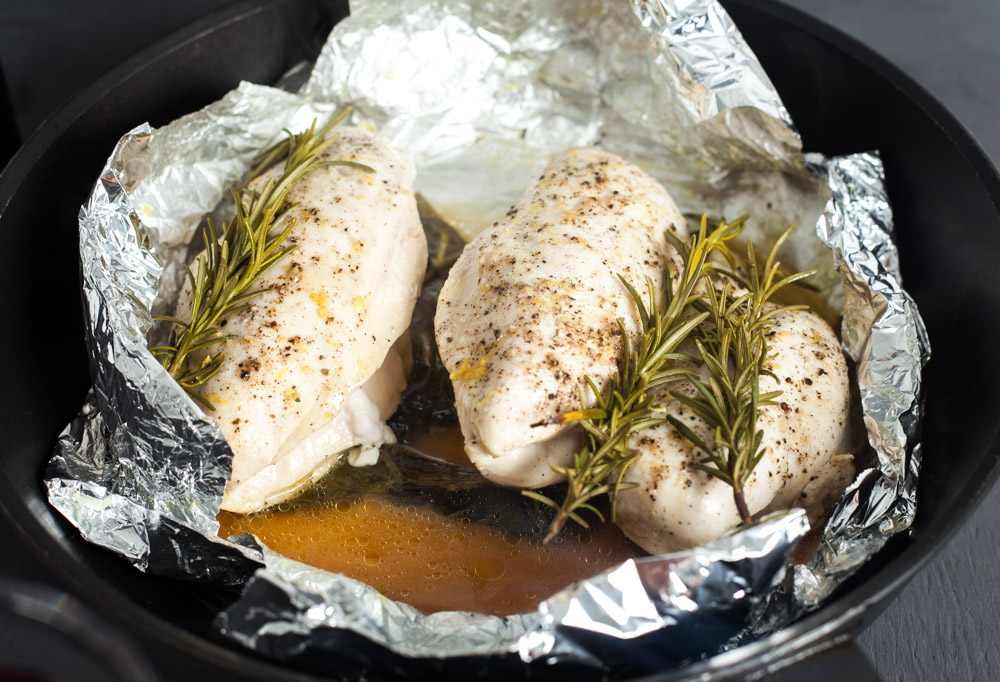
A quick and easy-to-make recipe with a minimum of ingredients. And the result is a flavorful and soft chicken breast. A great dish for a diet menu. The breast turns out with a wonderful noble smell and taste of spinach and rosemary.
3. Colored dumplings with spinach and meat
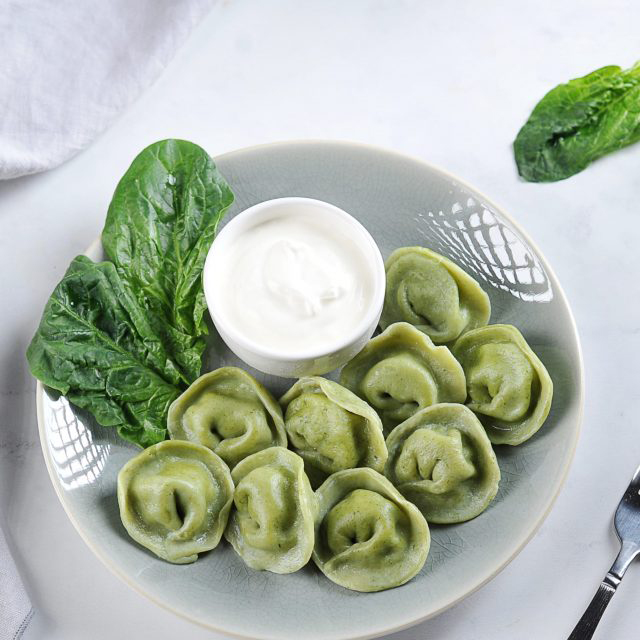
Bright and juicy dough of green color, with a slight taste of herbs. It turns out this way thanks to the spinach. Inside is the classic meat filling of pork, beef and onion. You can replace the meat stuffing with vegetable stuffing. And you will have vegetable diet dumplings.
4. Spinach egg sandwich

A great option for a quick and nutritious breakfast or snack. Yummy toast with toppings. You can use a variety of toppings, combining spinach with cheese, bacon. Spice up the sandwich with your favorite spices.
5. Spanakopita (Greek spinach puff pastry)

A popular pie in Greece. Easy to make and incredibly tasty. You can serve it with yogurt, kefir, or sour cream.The pie is delicious both warm and cold.

Spinach roll with red fish and avocado. A classy appetizer for the holiday table. The health benefits of this dish just max it out.
7. Spinach and butter by Jamie Oliver
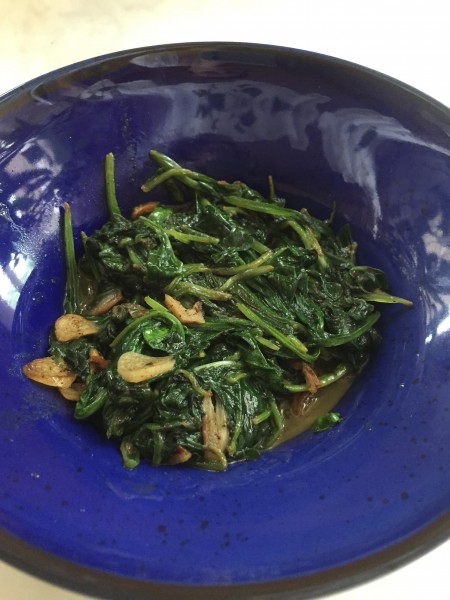
A simple, easy and delicious dish. You’ll love healthy spinach in this version for sure. The butter makes the greens even more tender and rich in flavor. You can use such spinach as a separate dish and as an addition to meat dishes.
8. Japanese spinach salad with sesame dressing

The spinach in this salad is boiled and comes out with an interesting slightly crunchy texture. A nice nutty flavor bouquet with a perfect balance of salty and sweet. A tasty, healthy, light side dish or salad with an unusual flavor would go with many main dishes.
9. Green smoothie: apple, spinach and banana

A tonic, healthy drink with lots of vitamins. A great option for hot summers. When dieting – perfect snack or breakfast. If you are active in sports, this smoothie will be your aid in recovery after a workout at the gym.
10. Thin spinach pancakes

Pancakes are incredibly tasty. you can consume them just without anything. Or you can use a filling of meat, vegetables. Add sour cream. A great dish for a snack or a separate meal.
11. Filo bundt cake with spinach and feta

A charming and exceptionally delicious cake. The thin and crispy filo pastry is perfectly saturated with the juice of the spinach and feta. The golden color of the cake draws the eye. The nutritious and juicy cake will please even the pickiest of foodies.
12. Spinach and basil pesto
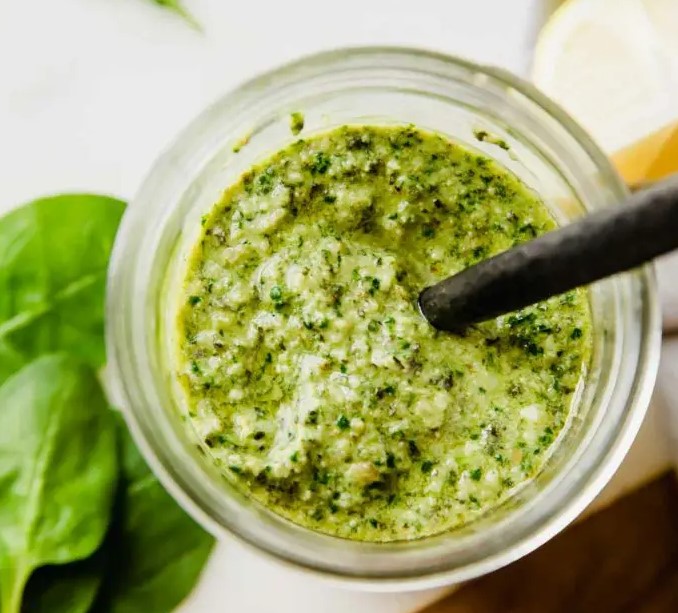
Creamy tasting, surprisingly healthy spinach and basil pesto. Thanks to the nutritious spinach-based punch – you won’t feel overly satiated. It will take you 5 minutes or less to make this dish. It can easily be made vegetarian. Perfect as a side dish with any dish.
13. Quick spinach soup (Low Carb)
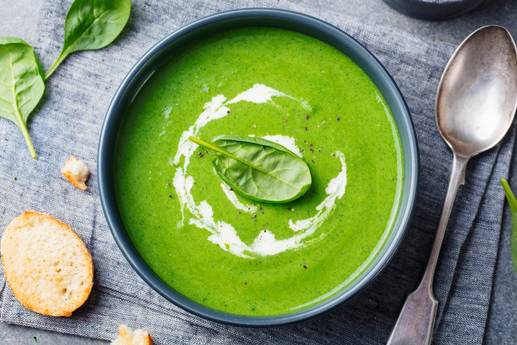
Spinach cream soup will fill you with good cheer, and huge amounts of vitamin C, magnesium, iron, and beta-carotene. One serving of this soup contains only 15 grams of carbs. It is ideal for a low-carb diet.
14. Cup of wild rice with red lentil curry and spinach

The combination of hearty red lentils, fresh ginger, lots of spices, young spinach and coconut milk is the perfect balance for a creamy consistency. You can use spices to your liking. Wild rice can be substituted for regular rice. A great nutritious and healthy option for lunch or dinner.
15. Stuffed spanakopita shells

Fresh peas, spinach and tender herbs all go perfectly with the cheese base for stuffing the shells. The dish turns out tender, flavorful, nutritious and delicious. And the filled shells on your plate will remind you of pebbles by the sea.
16. Greek roasted beans with spinach
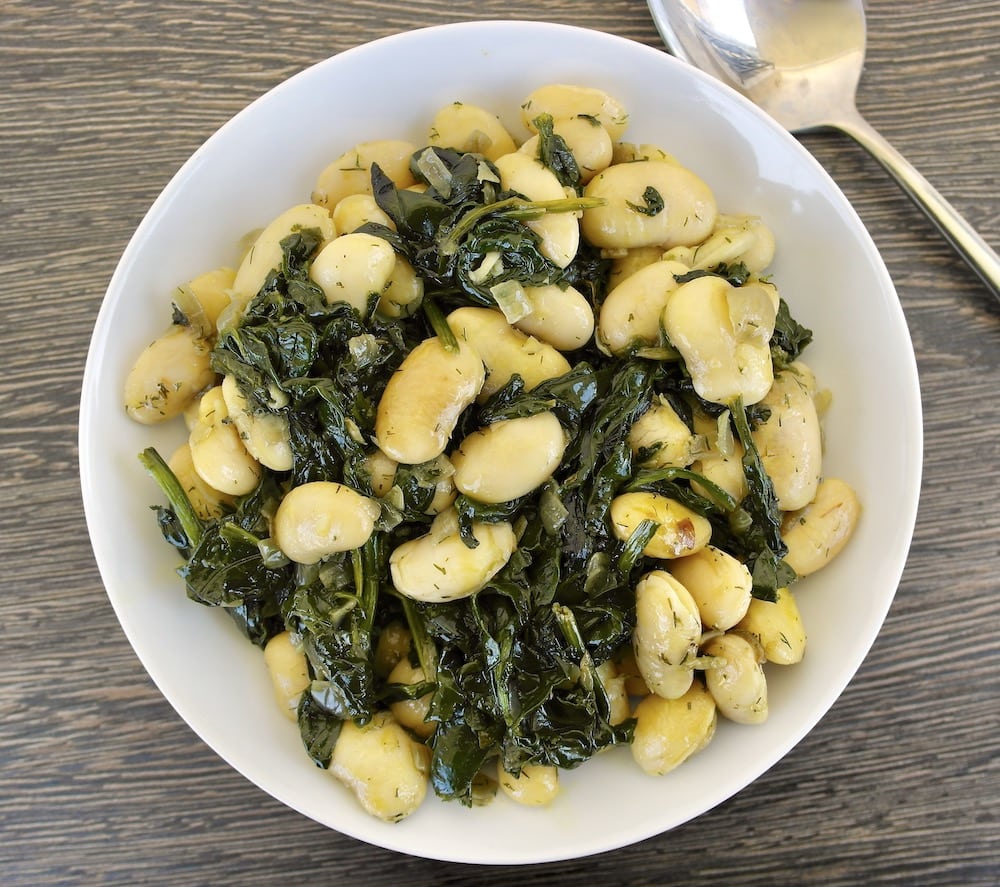
This dish has an abundance of nutrients. You can serve it as a side dish or as an appetizer, but it’s best as a main dish. If you like cheese – add feta cheese. The flavor will be creamier and spicier.
17. Raspberry spinach cake

A delicious, light and flavorful raspberry spinach cake. Velvety, bright emerald-colored spinach cakes, delicate sour cream and flavorful raspberries. You definitely will not be left indifferent to such a cake. Extraordinarily beautiful appearance.


